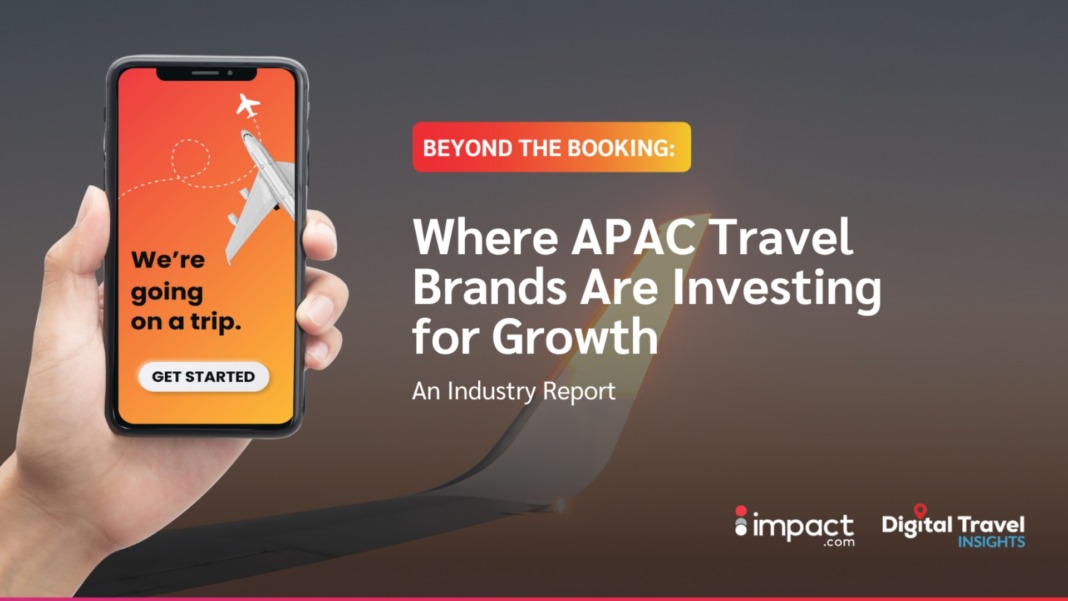impact.com, a global leader in partnership management, has published its first Asia-Pacific travel marketing insights report, created in collaboration with Digital Travel Insights by WBR. Titled Beyond the Booking: Where APAC Travel Brands Are Investing for Growth, the report sheds light on how both brands and consumers are adapting to the region’s shifting travel and ecommerce landscape. Based on responses from 100 marketing leaders across Southeast Asia and 1,200 travellers from Singapore, Australia, and China, the report reveals changes in consumer preferences, booking behaviour, and brand marketing priorities.
The findings point to an industry recalibrating in response to post-pandemic challenges such as travel fatigue and economic pressures. While 65% of marketers in Southeast Asia are now focusing more on customer retention, and 64% on brand-building, a significant number continue to rely on online advertising as a key driver for bookings. However, this channel is trusted by only 27% of Singaporean and 18% of Australian travellers when it comes to finding travel inspiration, prompting a call for marketers to re-evaluate their strategies.
Adam Furness, Managing Director APJ at impact.com, said, “The modern consumer demands trust, transparency and authenticity, and they turn to their communities and trusted sources of information to guide their purchasing decisions. The brands that thrive are balancing acquisition with retention and community-building through partnerships with affiliates, influencers, publishers, customer advocates and more. This report highlights how partnerships can help marketers increase revenue and build valuable connections with travellers through authentic content, recommendations and reviews.”
Trust and authenticity influencing travel purchases
One of the central insights from the report is the growing influence of peer recommendations and community-based content. Word-of-mouth and referrals are the top sources of influence for travel decisions, cited by 62.5% of travellers in Singapore, 67.5% in Australia, and 75% in China. Despite the clear preference for trusted voices, many brands still underinvest in these channels, overlooking a significant opportunity to engage more effectively with their audiences.
Singaporean travellers are also shown to be using a broad range of digital platforms during the decision-making process. Comparison websites (74%), online travel agencies (65%), loyalty programmes (51%), and social media (31%) were all identified as influential tools. This multi-channel approach suggests that brands need to build presence and credibility across several digital touchpoints if they are to guide customers smoothly from discovery to booking.
Partnership marketing on the rise
Across the region, partnerships are proving increasingly valuable in helping brands stand out in a crowded marketplace. In Singapore, 68% of travellers trust review and comparison sites, a sentiment echoed in China (72%) and Australia (59%). This highlights the growing importance of incorporating affiliate links in travel content and guides, allowing brands to reach consumers earlier in their journey.
While 27% of marketers continue to rely on OTAs and aggregators to reach high-intent audiences, the report notes that high commission fees—sometimes up to 30%—are leading many to reconsider their marketing mix. Affiliate marketing is emerging as a cost-effective alternative, with 25% of respondents naming it a growing priority. Its performance-based model, which rewards partners only when a booking is made, aligns well with consumer demand for added value such as cashback, discounts, and loyalty benefits.
Looking ahead at growth strategies
The report highlights that while traditional digital advertising and OTA partnerships still receive the largest share of attention—at 27% and 28% respectively—other strategies are gaining traction. In Singapore, 45% of travellers trust affiliates and 63% trust influencers when planning their trips. Similar patterns are evident in Australia, where 50% rely on affiliates and 68% on influencers, and in China, where the figures rise to 59% and 75% respectively.
These findings underline a shift in consumer behaviour that prioritises authenticity and personal connection. As such, marketers are being encouraged to diversify their media strategies, invest in long-term partnerships, and adopt content-led approaches that speak directly to their audiences’ values and expectations.
The report concludes with insights into upcoming opportunities, emerging trends, and strategic priorities shaping the future of the travel and hospitality sector across Asia-Pacific.





